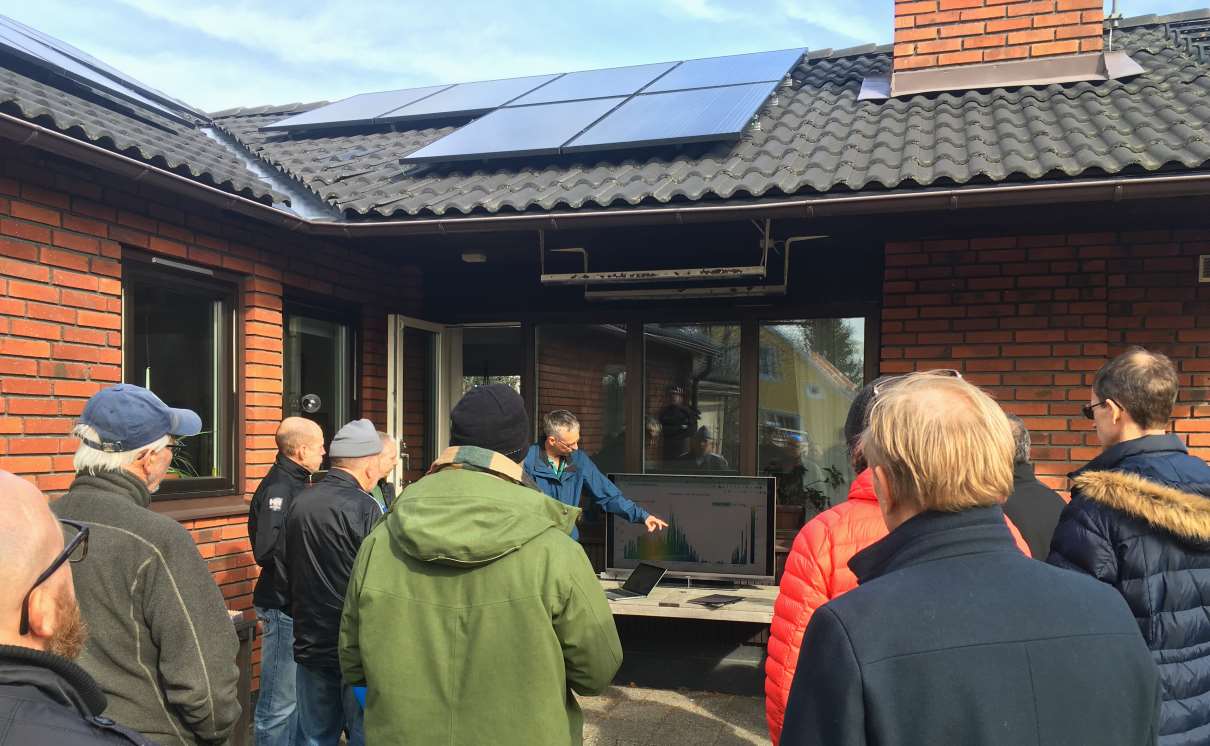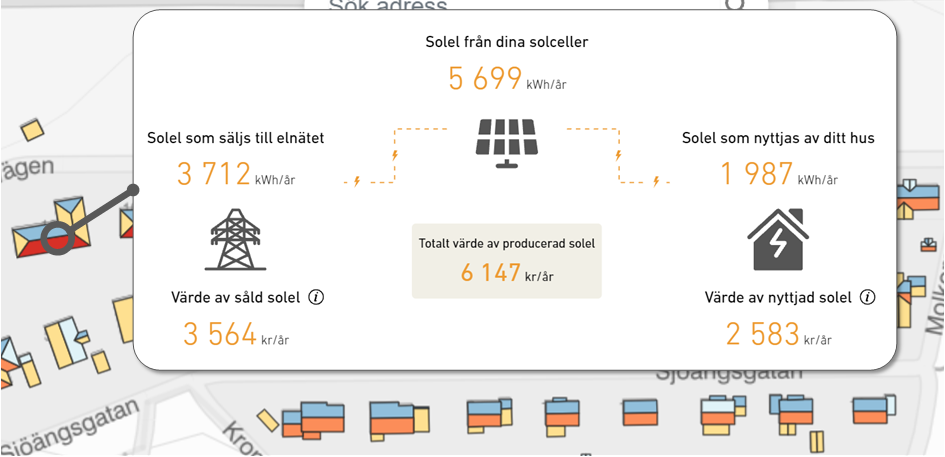Prosumer-Centric Communication for Solar PV Diffusion (completed)
Numerous environmental threats are motivating the transition to a sustainable energy system. Buildings are a major contributor in that they represent 39% of final energy consumption in Sweden while simultaneously providing a great potential for solar photovoltaics (PV). To adopt PV, building owners must navigate a complex landscape of technology options, suppliers, and economic uncertainties, challenging their decision making process.

Funded by: Energimyndigheten in the Design for Energieffektiv Vardag program
Time period: August 2019 – June 2022
Project partners: KTH Energy Technology, Beteendelabbet, Tyréns, Karlstads Energi, Karlstads Kommun, Liseberg och Örby Slott Villaförening
Background
One of the most promising techniques for increasing renewable energy generation is rooftop solar photovoltaics (PV). The Swedish government’s energy goals have PV providing up to 10% of electricity in 2040, a 30x increase from today. Solar PV installations are growing rapidly, due primarily to generous state subsidies, rapidly declining prices, and strong public interest. However, the subsidies are expensive and being questioned as the most effective use of state funds while prices are stabilizing. Even though values and attitudes towards environmentally positive technologies are strong in Sweden, there is a risk that the extrinsic motivators (i.e. subsidies) are hiding the so-called value-action gap. For successful diffusion of solar PV, communication and education techniques will need to be more user centric in order to build stronger intrinsic motivations towards adoption.
Aim and objectives
The goal of this project is to develop the most effective techniques from behavioral economics to create a scalable, prosumer-centric communications framework. A design thinking approach will be used to identify the needs and barriers from multiple stakeholder’s viewpoints, followed by an agile prototyping phase to test ideas and techniques. The resulting framework aims to deliver a scalable method of communication that provides better heuristics to users for complex decision making while nudging them towards sustainable choices and greater PV adoption.
The societal goal of this project is to increase solar PV installations in Swedish buildings beyond the subsidy driven, early-adopter phase. Our project helps accomplish this by identifying the most effective techniques from behavioral economics to create a scalable, user-centric communications framework. Reaching this goal requires meeting the needs of multiple stakeholders, which will be treated with a design thinking approach. The resulting framework aims to deliver effective communication methods that provide better heuristics to users for complex decision making while nudging them towards sustainable choices. It also aims to give energy companies a scalable method of sales communication that reduces customer acquisition costs, further enhancing adoption potential. The design research of this project may also lead to new interaction points between companies and customers where innovative business models can emerge.
Outcomes
The first half of the project focused on understanding the problem of information delivery around solar PV. We wanted to know how people search for information and what it is they are seeking. Activities included a workshop with Liseberg and Örby Slott Villaförening, 28 interviews with three types of building owner (villas, housing cooperatives, and professional property mangers), and a detailed review of existing online solar calculation tools. The result is a User Journey Map that provides the perspective the average homeowner as they attempt to learn and shop for solar PV.
The result is a very challenging environment with fragmented information sources. The purpose and form of most online sources are too varied to be comparable, in particular the assumptions used to provide economic predictions. This makes it difficult to corroborate claims and quotes, particularly since most of the optimistic calculators are provided by PV sellers. To be effective, information should be personal, transparent, simple, and educational. These principles are used to design and execute the new solar map based calculators from Tyrens and Karlstads Kommun/Energi.

The maps are live (see links below) and are now hosting our experiments about user interaction and the effectiveness of competing communications techniques. By testing in the “real world” we hope to see natural searching and shopping behavior emerge. Results from the experiments will be published in Q2 of 2022.
Check out Tyréns SunEngine and Karlstads Solkartan which service five cities across Sweden: Huddinge, Södertälje, Gothenburg, Malmö, and Karlstad.
Read the full final report published at the Design for Everyday Energy Efficiency website
Media
Presentation at the 2021 Design for Energy Efficiency Lifestyles annual conference (10 min)
You have previously denied the display of content of the type "External media". Do you want to show content?
KTH press release on the launch of our new solar maps (in Swedish)
